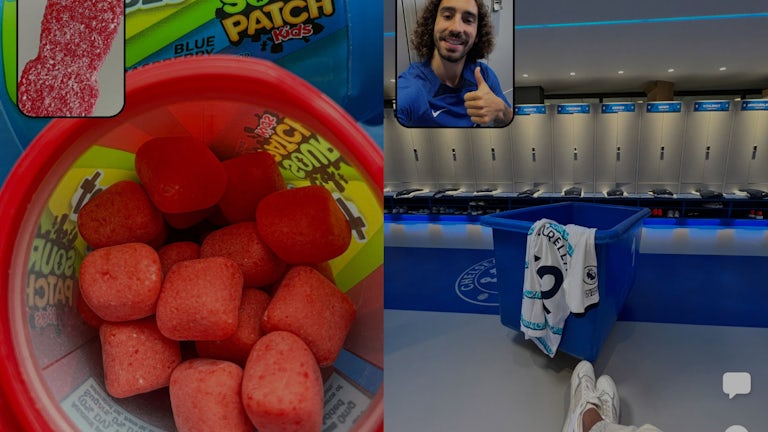Shopping Bag (0)
Shopping bag is empty


Brands looking to make that authentic connection is nothing new, but could BeReal actually be the truth, asks Amplify’s copywriter and Gauchoworld editor Seun Areoye...
I am aware of my unhealthy relationship with social media. Anytime the conversation of screen time comes up, I slyly exit, knowing I’m about to be ashamed of the amount of time I spend on Instagram, Twitter and Snapchat (don’t judge me). I even turned off all my notifications on TikTok as soon as I downloaded it, knowing how addictive of an app that could be, and it worked, but I couldn't bring myself to do the same for the rest, the feeling of FOMO crippling me.
So when I heard talk of this new social media app rising to prominence, I instantly dismissed it: I already spend enough time on my phone, I don’t need another reason, another app, to keep me staring at my screen.
I don’t want to sound like a BeReal salesman, but this app might just be the truth. Perhaps because it seems that the app doesn’t yet have a mechanism to try and keep you endlessly on the app. Due to that, the app screams authenticity, it seems to be a place for unfiltered social interaction, and therefore, with brands entering the space, it needs to be treated with that in mind.
BeReal enables the user to capture a moment using the front and back cameras simultaneously. Other social media platforms have already noticed its popularity and attempted to produce their own iterations. Despite the app being dubbed the “anti-Instagram” for encouraging posting of unpolished moments, Instagram has chosen to follow suit by releasing Dual that has a similar aesthetic, but you can also upload images, use filters and add text. Also jumping on the composite image trend is TikTok with its TikTok Now feature that sends a notification to users once a day, prompting them to capture a photo or video to share with friends.
As with anything that captures the attention of the masses, there are brands that’ll adopt it, attempting to make themselves appear ‘down with the kids’ — even if they’re a brand that’s been going for hundreds of years. As with TikTok and Instagram before it, some brands have been brave enough to adopt the BeReal aesthetic.
Closing the gap between a moment that feels far away from an onlooking audience there’s been a couple examples that come to mind when I think of the BeReal meets brand crossover:
Take adidaslondon’s celebration in the aftermath of England winning the Euros just earlier this year. Ending decades of disappointment and marking new ground for the women’s game, this was their immediate response to the Lionesses beating Germany 2-1 in the final. Unfortunately, while the comments are largely positive, due to England’s Nike sponsorship deal, adidas couldn’t actually get any live images of their sponsored players post-win, resulting in a set of images that felt out of step with the BeReal aesthetic.
On the other hand, when we look at Chelsea’s announcement of the signing of Marco Cucurella, it was a pretty faultless execution. Taking advantage of the app’s aesthetic to give fans an authentic, behind the scenes moment, it was an inventive way to announce a signing — especially when there’s plenty of competition between clubs on how to do this. With this transfer already being quite an entertaining one after this back and forth between the admins of Brighton’s and Chelsea’s twitter accounts, it made sense to keep the fun rolling, and using BeReal to do so was quite the idea.
Chipotle’s discount offer via BeReal after this tweet was intelligent in multiple ways. Not only a new and inventive way to offer customers a discount, it also meant their BeReal account generated a following very quickly, and allowed them to test how the app could work for them and how strong they could expect their engagement to be on it. Perhaps it could’ve featured a worker’s face? Perhaps they could’ve been in a Chipotle restaurant? Nevertheless, the execution is one that is simple, yet effective, something BeReal does well to amplify.
Last but not least, if we didn’t already love them enough, Sour Patch Kids’ anthropomorphism of their sweets has got me craving another packet. It was a good way to showcase a new offering, whilst keeping the sweet they’re known for in mind, so it doesn’t just feel like another chewing gum. Once again, a low-lift execution is heightened by the BeReal aesthetic, relying on the identity the brand is aware they have from external onlookers. As it’s also a ‘kid’s’ sweet, it makes sense to have a little bit of fun, right?
All in all, when using the BeReal aesthetic as a brand, it’s important to ask yourself a simple question: Is this moment real and authentic? If not, then BeReal probably isn’t the way to go.
The rest is silence.
To read the full article visit Little Black Book.